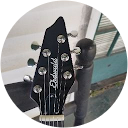To effectively manage noise, it is crucial to address all surfaces within the room. Noise tends to reflect off various hard surfaces, including ceilings, walls, shelves, machinery, and floors. By incorporating wall, ceiling, and corner baffles, the noise can be dampened, allowing soft materials to absorb and trap the sound before hitting the hard surfaces.
In addition, covering the flooring with rubber mats or carpets can further contribute to noise reduction.
If you are planning to enclose the source of the noise, it is essential to seal all edges tightly. This prevents sound leakage and ensures maximum effectiveness. Additionally, incorporating baffles within the enclosure is highly recommended. Baffles help dampen and reduce the overall noise within the enclosure, providing further control over sound levels.
























